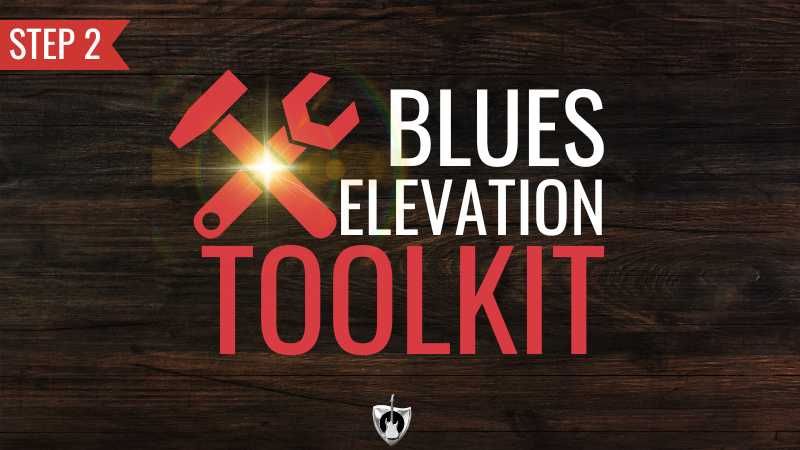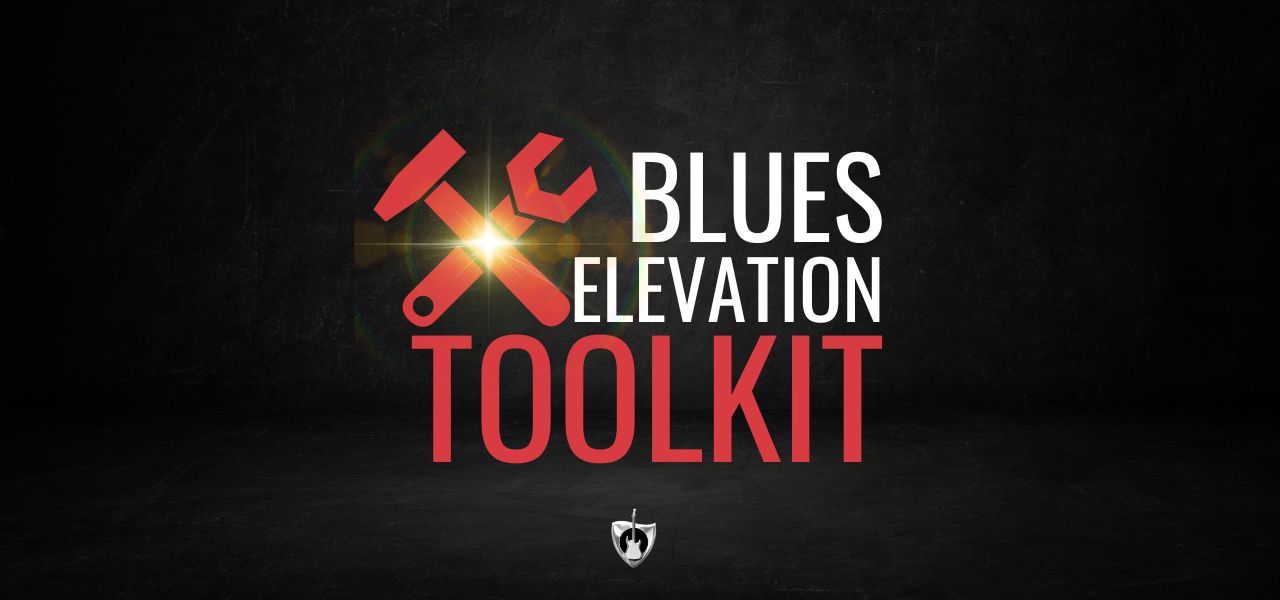Using a Metronome - Making the Most of Your Practice Time - 147

What's the best habit you can take on right now to speed up your progress on guitar?
It's practicing with a metronome. Join me today and find out why a metronome could radically change your progress on the guitar.
Have you ever said: "I hate practicing with the metronome. It feels cold, unforgiving, stale, lifeless" If you haven't, I'm sure you have felt the difference between jamming with a few other players and playing along to a metronome.
Yes it's different. It doesn't have that human vibe to it. It's not listening to you and it doesn't care.
I have another question for you. Have you ever heard a performer who had rock solid timing? They had rhythm so good that it just made you want to move.
How does that happen? Is it just a gift or is there a way to train your self to have great rhythm?
100% there is a way and that tool that left you cold and stale is the doorway to changing your life as a performer.
In my opinion, the metronome isn't a performance machine.
In fact, one of my most uncomfortable times performing was a church band that played all of their songs to a click.. a metronome. It created a feel that is just like your initial reaction to the metronome, cold, stale, and lifeless.
So, for better or worse, if you are performing to a click, you are locked in.
But, how about a "what if" here. What if everyone in the band had a great internal metronome? What if every member of the band had a great sense of time?
What could happen then without a metronome?
The group could make decisions of things to do with the main timing of the song. They could start and stop the song to add tension. They could make adjustments to the tempo, on the fly, based on the audience or an effect that would set the song off just right.
This is, to me, the best way to use the metronome. To train yourself to have rock solid time. I feel that the object isn't to perform to a machine. It's to practice with to give you a great Internal sense of time. So, when the time comes to perform, you are rock solid, without it.
So let's go ahead and get into the second installment of my Making the most of your Practice Time series with Using a Metronome.
Why use a metronome?
Well, the obvious answered is It helps you keep the beat (The timing of the song) steady.
A metronome, whether it's a digital or analogue one, is meant to give you an audible guide to a certain speed that's measured in beats per minute.
Music is all about matching things together. We match scales to chords
but we also need to match our rhythms to an overall master speed to keep a steady rhythm and to keep musicians together.
What happens when you aren't sticking to a steady tempo? Things will start to sound off. I've always mentioned to my students that when you are playing for an audience, rhythm is the thing that can make your break you.
Most audiences aren't filled with musicians. Normal, everyday people, may not have a trained ear for music. They just have a feeling that they like the song or not.
One of the things we always worry about is playing and singing in tune. This is very important. But, when you are playing for a general audience, very few listeners could tell if something is slightly out of tune.
But, everyone of them would know instantly if someone got off beat. Why is that?
Because of something we all have in common. A pulse. When it comes to our heart, our brain acts like a metronome. It sets the tempo of our pulse for the circumstances we happen to be in at the time.
We all are very familiar with rhythm.
So, for the person who is starting to play out, spending a great amount of time on your rhythm is super beneficial.
The common timing problems musicians face.
The first is Rushing - speeding up the beat. This is the one that I hear the most. This is when you force the song to go faster by playing notes way to early. Too much of this and the solid even timing of the song gets lost and you find yourself struggling to get all of your notes in where they are supposed to be.
It happens a lot when you play faster rhythms: 8th, 16th, 32nd notes.
One of the main reasons I see when players rush is excitement. When the adrenaline kicks in, it's very difficult to stay contained to a slower tempo.
The other common timing problem musicians face is Dragging - slowing down the beat. Although this isn't as common as Rushing, Dragging happens a lot with new players that aren't sure where to place the beat at all. This makes the song sound lazy and tired and is very very noticeable.
When you practice with a metronome, It helps you Play well with others.
The more you play to solid steady time, the more familiar you are with what a solid tempo sounds like. Your brain starts to rely on it and develop around it.
It's pretty easy to be a follower in a band. But, have you ever thought "I can play in time with a band but can't by myself"? This is really evident when a certain player has to play a solo Intro, outro, or fill. These tend to be parts of songs where things go off track. This is when the tempo gets altered.
Some like practicing with background tracks instead of metronomes. They are fun and are more comfortable to jam over, but they don't always give you the information you need to get better rhythm.
These clips of songs may be so dense ( there is so much going on) that you can't hear where the exact beat lies. You are just following along with multiple performers.
And, they themselves may be playing off of the beat, on purpose, to get a certain feel for the song.
To know how to have great timing, you need to be specific with were the actual beat is. And once you are solid in playing at many different speeds and
you have a strong sense of time you can start to manipulate the beat.
You can intentionally place your notes around the main beat in different ways with out changing it. That's different than rushing or dragging where the actual tempo of the song is accidentally changed. The main beat stays the same, the notes you play are offset. They are either:
1 Ahead of the beat slightly to give a sense of excitement and anticipation.
2 Behind the beat to give a relaxed, loose sound while still keeping the song driving ahead.
This is a good time to talk about Groove. what's the groove in a piece of music? It's the decisions to offset some of the timing of the notes while possibly leaving others perfectly on beat. Mixing and matching the timing in a certain phrase can give a really cool and distinctive rhythmic sound
When you've practiced with a metronome and have command of where you can place a note or chord relative to the guide beat, you can start to make your own grooves with these kind of decisions.
How to use a metronome in your practice
We are going to start using a metronome just to help you practice moving from one thing to another in time.
1. Changing Chords is the big one for a new player. We have all had the problem of not having enough time to switch between chords. Once you understand where the beat falls, you can start to anticipate when you need to have that new chord play and then give yourself the time (ahead of time) that's needed to stay on beat.
2. Using a metronome is important when you practice single Notes in scales. These are commonly practiced in 8th and 16th notes. If you remember from before, this is prime rushing territory. Scales always seem to rush. Using a metronome will train your brain to stay on time when you have to play lots of fast consecutive notes.
3. When you are first playing strumming patterns it can be very difficult to start breaking down rhythms. To see what down or up stroke you need to play on a certain beat, or half or quarter of a beat.
The metronome can be like audible graph paper, that makes it very clear how much time you have to fit in your down and up strokes before you move on.
The next way to use a metronome is to practice playing at faster speeds cleanly and correctly.
First, make sure you are able to play at a moderate tempo correctly.
Then, start to bump up the BPM. At some speed, your picking doesn't seem to be able to keep up. It seems difficult to impossible to play what you did at just a few BPM slower. This BPM is your number. This is where we are going to focus our practice to play faster and cleaner.
It's easy. Just back off by a few BPM to were you are comfortable again to practice. Then, after a day or two, Bump up the BPMS one or two notches.
The difference will be so slight that you will not notice it. Practice here for a few days until you are comfortable. Then, repeat. We will fool ourselves into speeding up over time. It works!
The other great benefit of practicing with a metronome is to practice playing at slow speeds.
Very slow speeds are so much harder to play that fast speeds.
Think of it, at fast speeds, if you are off time, you are still pretty close to the beat. The time between each beat is small. You are close even if you are wrong.
But, the slower the speed, the more time to get away from the beat. You have more of a chance for error and more chance to completely lose the beat and train wreck.
To do this we just do the opposite of our speed practice.
Find a slow tempo that you are playing on beat.
Slow down the metronome until you start guessing where the next beat will come in.
Crank up the Bpm a notch or two.
Each few days, lower the metronome to slowly ease yourself into the slower tempos.
Bonus: special metronome exercises
So let's put this to work! How about some common exercises to Build speed.
The basic Chord progression.- C F G C
I'll give you a basic chord progression here, but you should use one for one of the current songs you are learning or writing.
Play the tempo of the song and see how you are doing.
If it's good, start there and every day for a week, bump up the tempo by one Bpm. Build your self up When you start struggling, back off one, give it a few days and start moving forward again.
Scale patterns
Use this formula for your scale patterns too.
Find your number.
Bump them up.
when you struggle go back one and try again the next day or two.
The other place you should be using a metronome is with Technique exercises
They are fantastic and not the same a playing scales. I see the results of these un musical exercises every weekend when coaching videos pour in.
The ever changing combinations of tech patterns.
Great for helping with had freeze. Have you ever felt that? Your hand froze at at certain tempo, started to cramp and you had to stop.
By changing these patterns each week you work all of the different muscles in your hand and wrist and are ready for any weird chord or scale that could twist your hand an awkward way.
Playing ahead and behind the beat
If you haven't tried this before, I suggest you do. It's really fun. Just play even quarters first, just one note it. Try to anticipate it by a fraction. Then try to delay them by a fraction. You may instantly recognize these sounds.
To get a great visual of our rhythms, record this to a click in a digital audio workstation. You will see exactly how much you are ahead or behind the beat.
Then you can start to experiment because you now have a visual reference point.
1 quarters
2 eighths
3 Mixed
Once you get confident with placing your rhythms on the beat, you can start filling in the beats yourself (Subdividing).
Instead of setting the metronome to click every quarter note. Just have It on the 1st beat. That leaves all of the other beats to place in your mind. This is tough the first time you do it. And you will know instantly if you did it correctly because, if you are off beat, you will not come back in time for the click on the next measure.
You can do this to practice triplets as well. Dividing each quarter note into three parts and then coming in on the one of the next measure will take some time without the help of quarter note clicks.
And finally, when you are feeling confident, you can try playing behind the beat with quarters by only hearing the 1st click on each measures. Infinitely more difficult.
My task for you this week is to get started with the metronome. Put it front and center in your practice space and start playing your chord progressions and find your number.
And while you are in your practice space, download my guide to clear sounding chords:
https://www.playguitaracademy.com/chordguide
We'll get those chords together and clear up the rhythms in one week!
GET FREE WEEKLY GUITAR LESSONS, PODCASTS, AND MOTIVATION DELIVERED TO YOUR INBOX.
Your information is kept safe. It's never shared with third parties.




